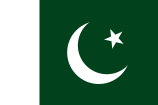Monday,May 03,2010
The Guimet was gracious enough to invite Prime Minister Gilani for the inauguration ceremony but the suspension of flights to Europe prevented his presence. The Pakistani government should realise that the world remains in awe of our historical treasures. It should project these at home and abroad with full ownership.
Gandhāra (Sanskrit: गन्धार, Pashto: ګندهارا, Urdu: گندھارا, Gandḥārā; also known as ویهیند Waihind in Persian) is the name of an ancient kingdom (Mahajanapada), located in northern Pakistan and eastern Afghanistan. Gandhara was located mainly in the vale of Peshawar, the Potohar plateau (see Taxila) and on the Kabul River. Its main cities were Purushapura (modern Peshawar), literally meaning City of Man and Takshashila (modern Taxila).
The Kingdom of Gandhara lasted from early 1st millennium BCE to the 11th century CE. It attained its height from the 1st century to the 5th century under the Buddhist Kushan Kings. The Hindu Shahi, a term used by history writer Al-Biruni to refer to the ruling Hindu dynasty that took over from the Turki Shahi and ruled the region during the period prior to Muslim conquests of the tenth and eleventh centuries. After it was conquered by Mahmud of Ghazni in 1021 CE, the name Gandhara disappeared. During the Muslim period the area was administered from Lahore or from Kabul. During Mughal times the area was part of Kabul province.














No comments:
Post a Comment